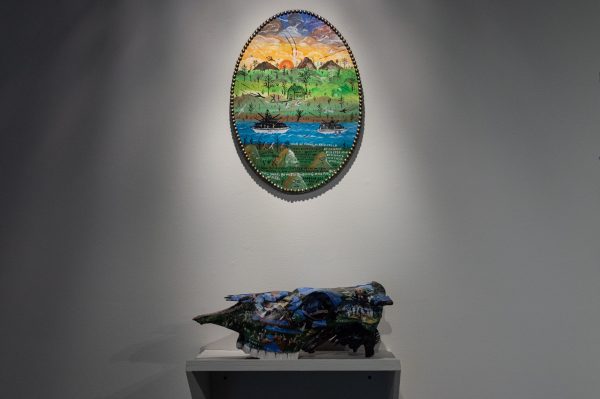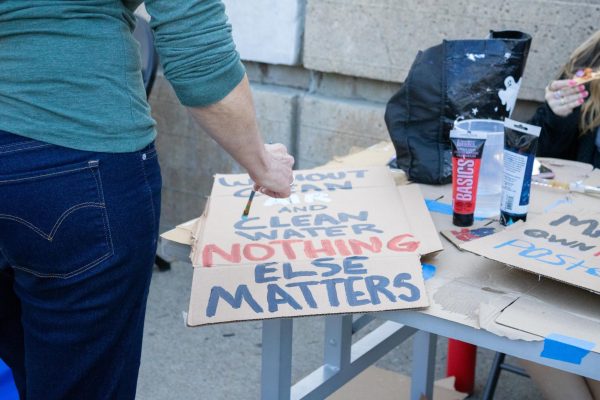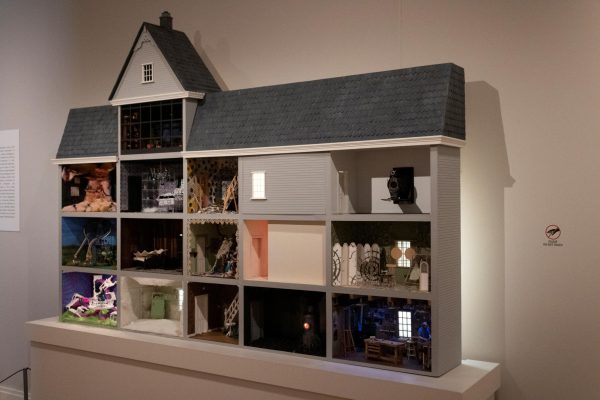“Intimate Apparel” is a Patchwork of Participation and Performance
Originally published on November 18, 2021.
“Intimate Apparel”, a play directed by Brittney Harris and performed by ODU students, is live on stage in the Goode Theatre on Nov. 10-13 and 18-20 at 7:30 p.m. The matinee will be Nov. 21 at 2 p.m. Tickets are available at the door and online.
The play centers around an African American seamstress named Esther, and is set in New York City in 1905. Esther makes a living sewing intimate apparel for women of all class standings and aspires to one day own her own beauty salon. Along the way, she makes a quilt, telling it her life stories and filling it with the money she saves for her dreams.
Harris, who is an assistant professor at ODU, sought to incorporate the play’s theme of rebirth through the quilt that hangs over Esther’s bed. She decided it would be 18 feet long, to represent the years Esther spent sewing and dreaming.
“The whole show is about these different patches and her life is like a patchwork quilt,” Harris said. “What goes into her quilt [is] that she sews her money into it, her life dreams and all that. So she’s kind of like leaving behind this fragmented part of her life to start a new patchwork.”
The quilt’s size gives it a presence on the stage, and to Harris, it causes it to become the 7th character.
“She has a relationship with it,” she said. “So the moment when she rips it apart to give what’s inside of it to her husband you feel like she’s giving a part of herself. And so that was a major addition that I added that made the quilt [and] made the set come alive.
Harris wanted to bring an opportunity for the audience to engage with the content. In the lobby, before the play, guests have the option to choose a patch of fabric and cut it into a shape that they feel represents them. At the end of the show Harris plans to have all of the patches stitched together to create a quilt of the experience.
“The play ends on this note of rebirth, restarting,” said Harrell. “She’s also pregnant at the end of the show, so she’s kind of like leaving behind this fragmented part of her life to start a new patchwork. So that extends out to what we’re going to be creating in the lobby.”
The play was partially based on historic photographs, which Harris incorporates into scenes throughout the performances. Harris also chose to adjust the layout of the Goode Theater so some characters are positioned a level above others, to represent the differences between the statuses of the characters.
“I did this to show a couple of things,” she said, pointing at the differences in height between the parts of the set. The Globe Theatre is very versatile, with the space never looking the same from play to play, and the audience seating moves around quite a bit. Because of the way the set is shaped for “Intimate Apparel”, there are multiple spaces, such as a fabric shop, that are set on different floors of the venue, but are still visible to the audience.
“Living in New York [during] the Great Migration, that’s layers upon people living together,” Harris said. “ The two men are on a higher platform to show they’re almost untouchable. Because of their race, their status, also because in the set it’s like ‘I can almost reach you, touch you, but I can’t.’ George… who’s away in Panama, he’s almost a monolith. And when he comes down here he’s a very real man. I wanted to show the levels of that.”
Leila Bryant, who plays the lead role Esther, also liked how the set meshes the different worlds together.
“The flow of the stage and the set definitely brings about the dynamics of each scene and takes you through a journey while you’re in the show,” she said.
Bryant also said that she gained a lot of personal value from her experience working with the script.
“My favorite part about it was just learning how I work as a person as well as an actor.”
Harris worked with the actors to make the experience intimate and entice the audience into the world that the play builds.
“I think there’s this idea that theatre is heightened,” she said, “but sometimes it’s people living in their environment, and the fourth wall is being lifted, and we’re looking into their world, we’re looking into their lives. …We’re looking into the lives of these people.”

Sydney Haulenbeek is an English major and senior, graduating in May of 2023. Before becoming the Editor in Chief of the Mace & Crown she worked as...








